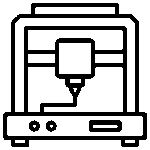
Tag Archives: Made in India.
Understanding MOSFET Thermal Impedance: A Beginner’s Guide
/*! elementor - v3.21.0 - 26-05-2024 */
.elementor-widget-image{text-align:center}.elementor-widget-image a{display:inline-...
MOSFET Pulse-Width Modulation Guide for Electronics Enthusiasts
/*! elementor - v3.21.0 - 26-05-2024 */
.elementor-widget-image{text-align:center}.elementor-widget-image a{display:inline-...
Reverse Protection in Telecom Systems: A Beginner’s Guide
/*! elementor - v3.21.0 - 26-05-2024 */
.elementor-widget-image{text-align:center}.elementor-widget-image a{display:inline-...
SMPS PCB Layout Guidelines for Beginners
/*! elementor - v3.21.0 - 26-05-2024 */
.elementor-widget-image{text-align:center}.elementor-widget-image a{display:inline-...
SMPS Layout Best Practices: A Guide for Electronics Hobbyists
/*! elementor - v3.21.0 - 26-05-2024 */
.elementor-widget-image{text-align:center}.elementor-widget-image a{display:inline-...


















